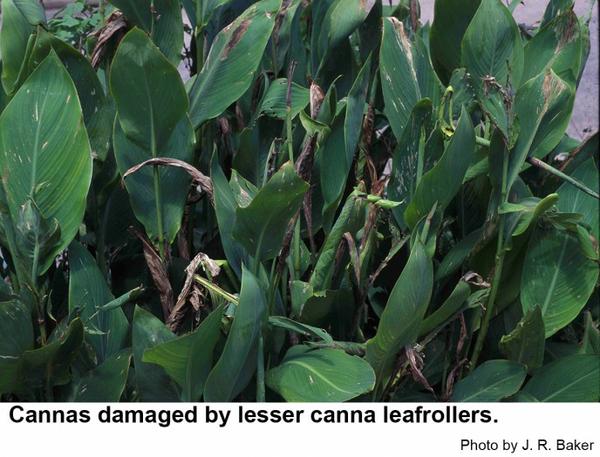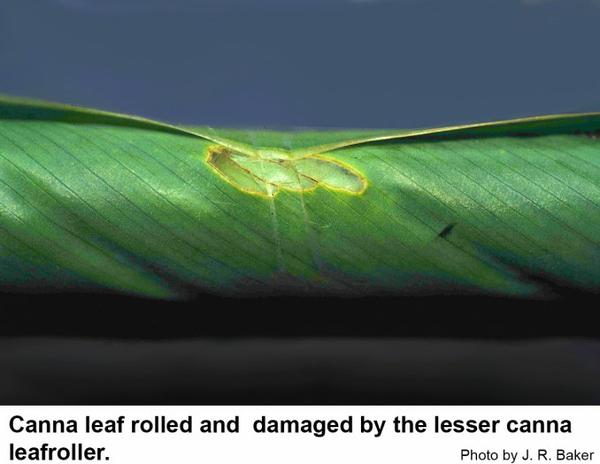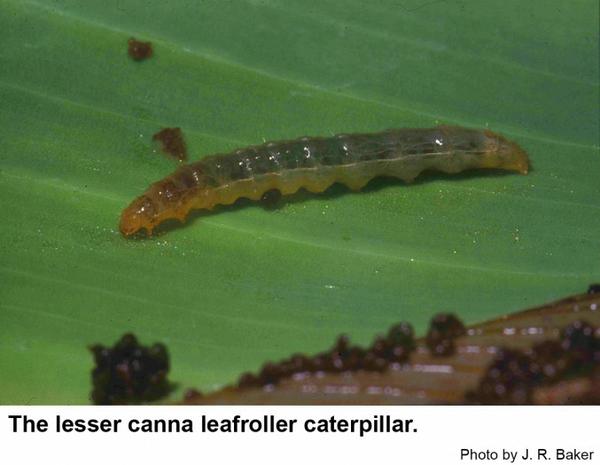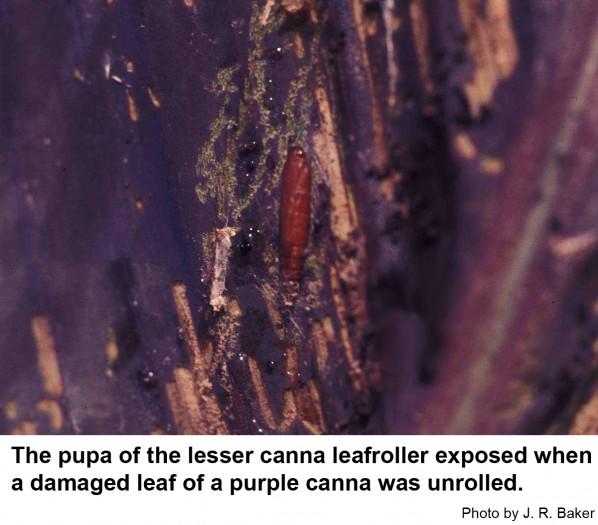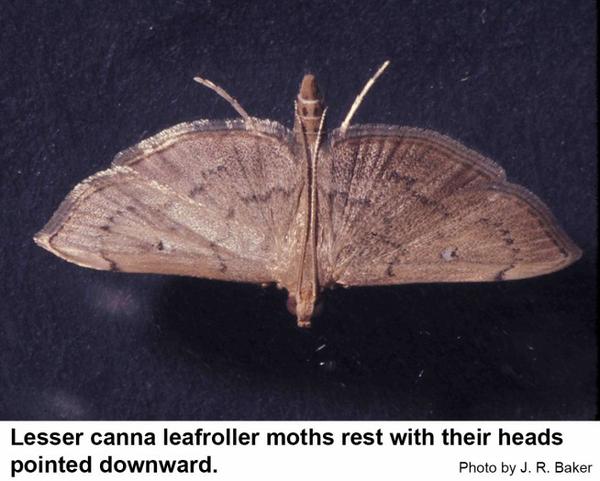Description and Biology
The lesser canna leafroller, Geshna cannalis, is a small caterpillar related to the European corn borer, pickleworm, coneworms, sod webworms and others. The lesser canna leafroller overwinters as slender caterpillars in the leaves and stems of canna. After pupating, new moths emerge to mate and lay eggs after new growth emerges in spring. When the tiny, new caterpillars hatch, they feed within the new, still rolled up leaves. Older caterpillars can actually tie the edges of older leaves together and roll the leaf back up! The lesser canna leafroller is evidently not cannibalistic as several caterpillars can be found feeding or overwintering inside one rolled leaf.
Host Plants
Cannas, wild and cultivated, seem to be the only host plant of the lesser canna leafroller. Theser caterpillars only feed on the upper epidermis and mesophyl primarily inside rolled up leaves. If not managed, lesser canna leafrollers may completely destroy the aesthetic value of cannas.
Residential Recommendation
One mistake canna growers make is to leave the old dead growth on the canna bed as a sort of mulch. Canna seems to be the only host plant for this pest, so that if the plants are somewhat remote from other cannas, it may be possible to drastically reduce the lesser canna leafrollers just by carefully removing and destroying all dead leaves and stems in the fall after the frost has killed it back. It is possible to eradicate this pest by using Orthene as a spray several times perhaps at ten day intervals. The Bacillus thuringiensis insecticides are also effective for this pest. Spray the dilute pesticide mixture directly downward into the rolled leaves so that the pesticide can soak into the shelter around the worms. Also pick up and destroy all of the dead tops from the cannas this winter after frost.
References
- Common name: lesser canna leafroller, scientific name: Geshna cannalis (Quaintance) (Insecta: Lepidoptera: Pyralidae). McAuslane, H. J. 2000. Featured Creatures, Entomol.& Nematol. FDACS/DPI, Univ. Florida.
- Insect and related Pests of Flowers and Foliage Plants. Baker, J. R., ed. 1994. North Carolina Cooperative Extension Service Publication AG-136. 106 pp.
- Three injurious insects: bean leaf-roller, corn delphax, canna leaf-roller. Quaintance AL. 1898. Florida Agricultural Experiment Station Bulletin 45: 53-74.
- Extension Plant Pathology Publications and Factsheets
- Horticultural Science Publications
- North Carolina Agricultural Chemicals Manual
For assistance with a specific problem, contact your local N.C. Cooperative Extension Center.
This Factsheet has not been peer reviewed.
Publication date: July 1, 2013
Reviewed/Revised: Oct. 1, 2019
Recommendations for the use of agricultural chemicals are included in this publication as a convenience to the reader. The use of brand names and any mention or listing of commercial products or services in this publication does not imply endorsement by NC State University or N.C. A&T State University nor discrimination against similar products or services not mentioned. Individuals who use agricultural chemicals are responsible for ensuring that the intended use complies with current regulations and conforms to the product label. Be sure to obtain current information about usage regulations and examine a current product label before applying any chemical. For assistance, contact your local N.C. Cooperative Extension county center.
N.C. Cooperative Extension prohibits discrimination and harassment regardless of age, color, disability, family and marital status, gender identity, national origin, political beliefs, race, religion, sex (including pregnancy), sexual orientation and veteran status.

